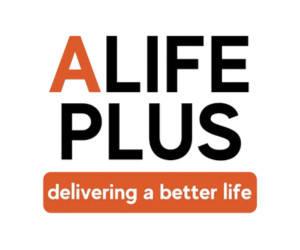What’s a Macro?
The term ‘macro’ is no stranger to the health and fitness world, and you’ve probably heard the term ‘counting macros’ swoop in and out of conversations with friends or family. But what are macros to begin with?
Macro stands for macronutrients, and these are nutritional building blocks that form the foundational bulk of your day-to-day meals. Proteins, carbohydrates, and fats all fall under the category of macronutrients.
- Carbohydrates: The carbohydrate group encompasses fibres, starches, and sugars. These are converted into glucose by your body, which is the primary energy source for your body. Simple carbs, such as sugar and high-fructose corn syrup, are more likely to lead to blood sugar spikes compared to complex carbs in whole-grains foods, fruits, and vegetables.
- Proteins: Proteins are large, complex molecules made up of smaller building blocks called amino acids. Proteins play a critical role in the growth, repair and maintenance of tissues.
- Fats: Contrary to popular belief, not all fats are bad. Dietary fats help provide your body with energy and support cell growth. There are two main categories of fats, saturated and unsaturated. Having a diet high in saturated fats can increase your heart disease and stroke risk. Instead, swap out saturated fats for healthier unsaturated fats.
Because macro stands for large, your body requires these nutrients in substantial amounts as each plays diverse roles in supporting and bolstering your body’s functioning.
Macronutrients supply your body with energy that can be quantitatively measured as calories or kilocalories. The calories provided by each macronutrient is as follows:-
- Carbs: 4 calories per gram
- Proteins: 4 calories per gram
- Fats: 9 calories per gram [1]
Micro Vs Macronutrients
Compared to macros, your body requires micronutrients, such as vitamin C, vitamin E, Vitamin B-6, iron, folate, and calcium, in much smaller quantities. This is commonly measurable in milligrams or even micrograms. Macronutrients provide varying levels of micronutrients.
However, unlike macros, ‘counting micros’ won’t fare too well because keeping track of such minute amounts of these nutrients would be highly challenging! Hence, people usually stick to counting macros and not micros as a dietary approach.
Nevertheless, a lack of proper micronutrient intake can result in various mineral or vitamin deficiencies and, ultimately, detrimental health consequences in the long run. Hence, practising a healthy and balanced diet is key to ensuring your body is supplied with all the nutrients and energy it requires!
If you are on a specific diet, such as a keto diet, vegan diet, or low-carb diet, consulting your dietitian is a fantastic way to learn how to manage your diet and craft meals that meet your nutritional and dietary needs. Additionally, they may also recommend a supplement to support your nutritional intake.
Should I Track Macros or Calories?
There have been sparks of debates that weigh out the benefits and drawbacks of various dietary approaches. And one hotly debated topic is whether counting calories or tracking macros is the more efficient method to achieving different fitness and wellness goals.
Let’s explore the differences between counting calories and tracking macros!
Counting calories
Counting calories allows you to track the number of calories you consume when eating and burn when engaging in various activities.
Ultimately, counting calories has been advocated as a non-negotiable tool as part of weight-loss interventions, and the concept boils down to this; Calories in versus calories out. When you burn more calories than you consume in a day, a calorie deficit occurs, which many people label as the gold-standard approach for weight loss.
On the other hand, many others think the counting calories approach is a time-and-effort-squandering tactic that doesn’t do much for weight control or reduction.
Is calorie counting an effective way to lose weight, though? Well, there isn’t a clear-cut answer to that.
While multitudes of studies show that people who eat more calories than they burn often end up gaining weight, this does not mean that hurling your body into a calorie deficit will guarantee weight loss. More accurately, a combination of interplaying factors will determine how your weight changes, rather than a sole factor or single health behaviour.
Nevertheless, calorie counting is a practical and cost-effective option to combat overeating. It paints a more precise picture depicting how much you actually consume on a daily basis.
Every dietary approach has its share of flaws, and while calorie counting helps you keep track of how much you consume, it does not give any insight into the quality of your diet. And often, it’s easy to forfeit quality when we anchor our focus solely on quantity.
Your food choices are equally critical to consider when crafting a balanced diet that can sustainably meet your nutritional needs and not just your weight loss goals.
Tracking macros
Tracking macros is a step further than counting calories. To sum it up, counting macros involves logging all the foods you eat into an app, website, or food journal. Doing this increases your awareness of the quantity and quality of foods you consume. Admittedly, though, keeping tabs on every bite you take can get exasperating, tedious, and time-consuming!
Because everyone’s nutritional needs differ, there is no one-size-fits-all macro ratio, and you will need to calculate this based on your dietary requirements, fitness goals, and how your body responds to certain foods. For example, some people thrive on a high-protein, low-carb diet, while others feel lifeless and sluggish if they don’t get their carbohydrate fix.
Check out our guide to counting macros here!
So, which is better?
Unfortunately, there’s no distinct winner here. For starters, counting calories is the more straightforward tool that may steer you in the right direction if you wish to achieve specific goals, such as weight loss.
The do’s and don’t of calorie counting may seem overwhelming at the start. Some practical ways to ease yourself into a calorie-saving eating pattern are to swap out higher-calorie foods for lower-calorie ones and gradually eat smaller portions. Plus, investing in a digital food scale will boost accuracy when counting calories because people usually underestimate portions!
For many, counting calories is a highly simple and convenient tool to keep tabs on how much food is consumed. It is a less tedious step to take in the right direction.
If you’re very invested in upgrading your health, though, you may wish to start tracking macros. While calories limit you to a number, counting macros helps you focus more on the quality and nutritional value of what you feed your body. More often than not, tracking macros is more time-consuming compared to counting calories.
As a whole, counting macros allows you to tweak your diet to consume specific amounts of each macronutrient to meet various dietary requirements or health goals, such as building muscle mass. Furthermore, choosing this approach lifts the emphasis off weight loss and redirects that focus towards nutrition, leading to healthier and more sustainable eating patterns.
Nevertheless, most people don’t have to track their macros unless specifically advised by a healthcare professional. It can be a nuisance, no doubt about that, though you may get more skilled at eyeballing portions with time.
Lastly, it is possible to squeeze processed, unhealthy foods into your macro count, ultimately defeating its purpose! Hence, tracking macros should never preside over consuming a well-balanced and healthy diet.
To err on the side of caution, people with eating disorders are highly discouraged from tracking calories or macros except under professional supervision.
What Should I Look For To Lose Weight?
While it’s important to include certain foods in your diet to create a sustainable and nutritionally dense weight loss diet, there are specific foods you should also avoid.
Let’s take a look at both sides of the coin!
What to Eat
Losing weight in a sustainable matter often requires a healthy, nutritious, and well-balanced diet. If you wish, discussing your weight loss plans with a nutritionist may help you navigate your diet choices better to attain realistic goals.
In general, here are some foods to look out for if you wish to drop some pounds!
- An adequate amount of healthy protein sources, such as beef, pork, chicken, salmon, shrimp, eggs, tempeh, tofu, beans, and legumes. An average adult woman generally requires around 46 grams of protein per day, while an adult male requires 56 grams per day. [2]
- Low-carb or leafy green veggies, including broccoli, spinach, kale, cucumber, Brussel sprouts, cauliflower, and cabbage.
- Healthy fats. Sources include avocados, walnuts, almonds, brazil nuts, fatty fish, flaxseed, and pumpkin seeds. Don’t shy away from healthy fats, as they serve beneficial purposes towards your heart’s health and overall wellbeing!
If you have a medical condition, food intolerances, or specific dietary needs, steer your daily meals according to your healthcare provider’s advice.
What to Avoid
We’ve all been there! Alluringly delicious snacks and foods beckon us to make leeway for them in our health-seeking diet.
But, don’t get me wrong! A small snack here and there will not build enough momentum to derail your entire fitness journey. But if having a small scoop of sugary chocolate-drizzled ice cream often leaves you downing the whole tub, it may be best to remove these less healthy snacks from the equation altogether.
If you’re looking to shed some pounds, you may wish to avoid or limit your intake of refined carbs. Not all carbs are the same. Some unprocessed whole foods contain high amounts of carbs but are incredibly nutritious, while refined or simple carbs have had much of their fibre and nutritional goodness stripped away!
Some examples of refined carbs include white bread, white pasta, sugar, some pastries, most breakfast cereals, and potato chips. Because sugar is easily found in so many types of foods, this also means limiting your intake of sodas, fruit juices, candy bars, gummies, doughnuts, flavoured yoghurt, and condiments.
In a nutshell…
It’s a challenge. No one wants to swap out a chocolate loaded sugary cookie for broccoli, no matter how healthy science claims it is. The fact is, drastic and extreme changes often don’t stick, and eliminating bread, pasta, or sugar completely from your diet is likened to reaching the peak of Everest in an hour.
One handy tip is to swap out bad carbs for healthier ones, such as opting for whole-wheat pasta rather than regular pasta or going for whole-grain bread at the bakery instead of white bread. With slight changes over time, you’ll gradually ease yourself into healthier yet sustainable eating habits that fulfil all your body’s needs.










